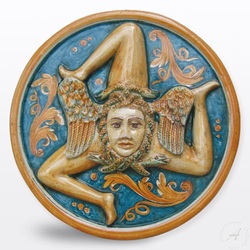 After a trip to Sicily, you can bring back a fantastic ceramic Trinacria After a trip to Sicily, you can bring back a fantastic ceramic Trinacria The Trinacria (or triskelion) is recognizable to every Sicilian and Sicilian-American. The ancient symbol represents the three sided island at the tip of Italy's boot (sorry for the metaphor). The word, from the Greek, means triangle and refers to the shape of Sicilia-- referred to by the ancients as the Star with Three Points. The three bent running legs represent the three capes of Sicily, Peloro , Passero and Lilibeo--all creating the points of the triangular island. The three legs, like the beautiful legs of a woman, are said to symbolize the three coastlines of white, sensual, sandy beaches that run along all three coastlines (nearly 1500 miles of beaches!) Perseus, after cutting off the snaked head of Medusa, gave the head to the goddess Athena to place on her shield. In the Trinacria, just as on Athena's shield, the head of Medusa wards off any invaders, lest they be turned into stone. The three leafy flourishes intermingled with the legs represent the fertility of Sicily--stalks of wheat. At one time, Sicily was the bread basket of the Roman Empire. Historians tell us that Spartan fighters carved a white leg bent at the knee (a symbol of strength) onto their shields. So perhaps there is also another meaning to the legs. Some say the legs are running while others say the legs are spinning. 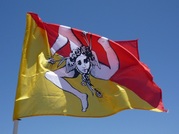 The Trinacria has been on the Sicilian flag since 1943, when Andrea Finocchiaro Aprile lead an independence movement with the allies. After WWII, it was officially used in the design of Sicilian flag when the Republic of Italy recognized Sicily as an autonomous region. The use of the Trinacria is much more ancient, however.... it appeared on Syracusan coins from the 4th century BC.  Isle of Man flag Isle of Man flag Just like the father in My Big Fat Greek Wedding, I'll prove to you that the word "Trinacria" is Greek: Homer, in the Odyssey, writing about Sicily's triangular shape used the the Greek word Thrinakie, which comes from the Greek thrinax (three peaks). This proves origins of the Trinacria is in ancient Greece. OK, enough the film's ideas from a Greek Dad. (Next I'll be telling you how spraying Windex on a pimple clears it right up!) The origin of Trinacria is more widespread and complex than that. The Trinacria's shape is often referred to as a triskelion; this shape can be found in many places among the general Mediterranean Basin region and in many European countries like France, Sicily, Crete, Greece, the North African coast, and the Isle of Man. Celtics use a similar shape in their coins and decorative motifs. Ancient coins depicting Trinacria were found in present day Turkey. The symbol has also been found on many ancient Greek ceramics... in southern Italy and Sicily. Keep in mind that Sicily, along with Italy, was once part of ancient Greece. Some triskelions found in these locations date from as early as the eighth century BC. A modern day triskelion from the 1950s appears in that little plastic insert adapter needed to play large hole 45 rpm records on a thin spindled turntable. Although the Trinacria appeared on coins and other archaeological artifacts in Mediterranean cultures for thousands of years, the Isle of Man has been using the symbol in an official capacity long before Sicilians. The Normans arriving in Sicily in 1072, borrowed and modified the design of the the Trinacria and brought it back to the Isle of Man, and since 1270 used it to replace the Viking ship on their previous flag. Their similar three legs wear armor and the boots have spurs, but Medusa and the wheat are missing. The Latin motto surrounding the Trinacria on the Royal coat of arms for the Isle of Man reads, “Quocunque Jeceris Stabit”--“Whichever way you throw, it will stand”. The true origins of the Trinacria are debated because of it's widespread use in some form or another in the ancient world. But there is no argument that this strange looking symbol has become emblazoned on the hearts and minds of every Sicilian. Here's a little music video with cheery Sicilian music and a showcase of Trinacria of all types... --Jerry Finzi
If you enjoyed this article, please SHARE it and LIKE it on your favorite social media site. Ciao! We also have pages on: Google+ StumbleUpon
5 Comments
Jerry Finzi
11/22/2017 11:01:22 pm
If you mean, how do you purchase products I've posted from Amazon... simply place any item you are interested in into your Amazon cart, then you have 24 hours in which to decide on whether to purchase or not. If you purchase within that time, you would be supporting Grand Voyage Italy--we receive a very small commission for things you buy based on our recommendations. Thank you very much for supporting us. We hope you like what we do around here. Ciao!
Reply
Maria Bondi Ballard
12/27/2018 07:06:10 pm
Enjoy this website.
Reply
Jerry F.
1/2/2019 09:15:07 am
Maria,
Reply
Martin Warr
11/17/2022 03:04:09 pm
Triskeles is found on ancient coinage in Lycia, and on staters of Pamphylia (at Aspendos, 370–333 BCE) and Pisidia.
Reply
Your comment will be posted after it is approved.
Leave a Reply. |
Categories
All
Archive
June 2024
|



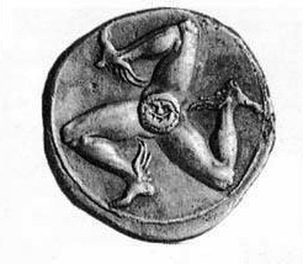
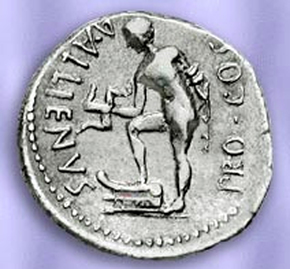
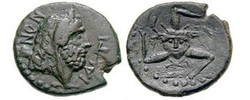


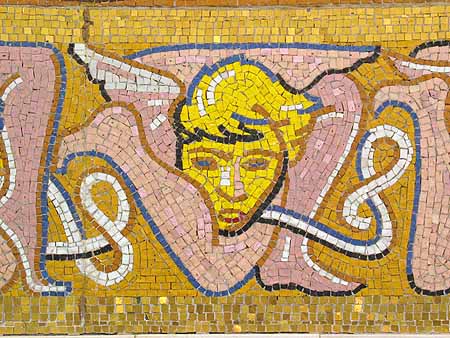
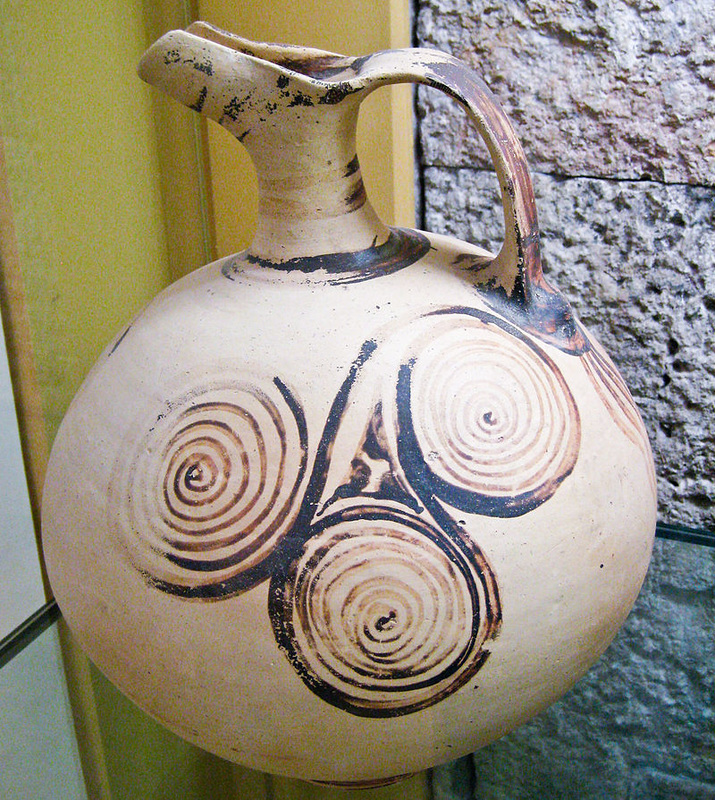
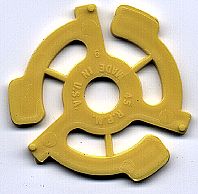

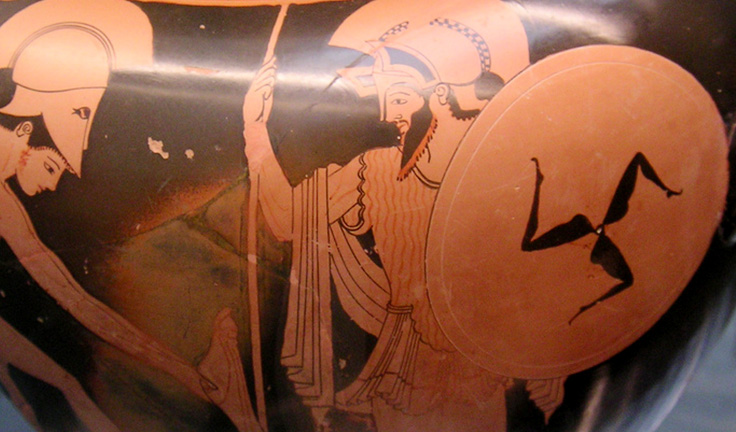
 RSS Feed
RSS Feed
